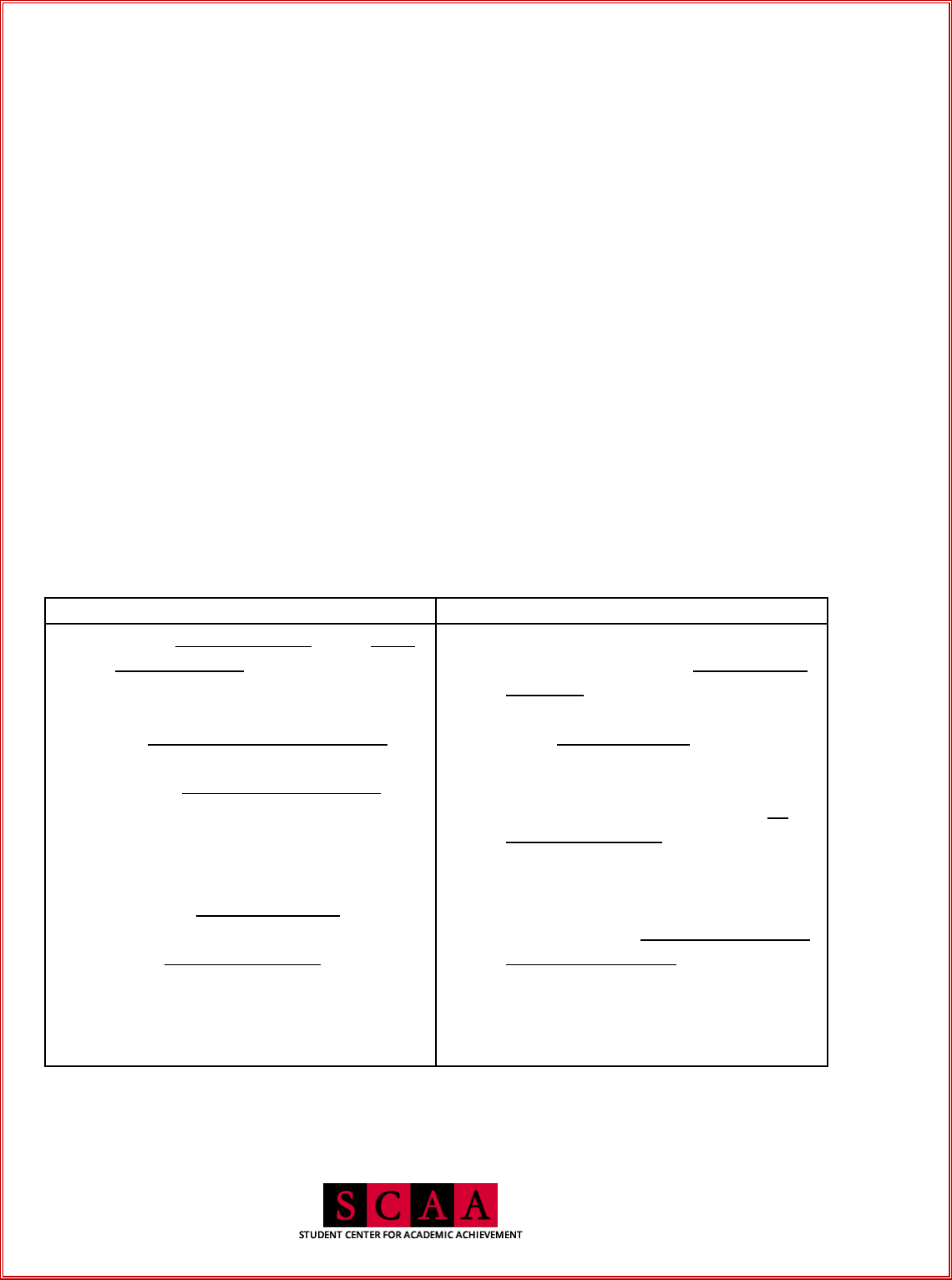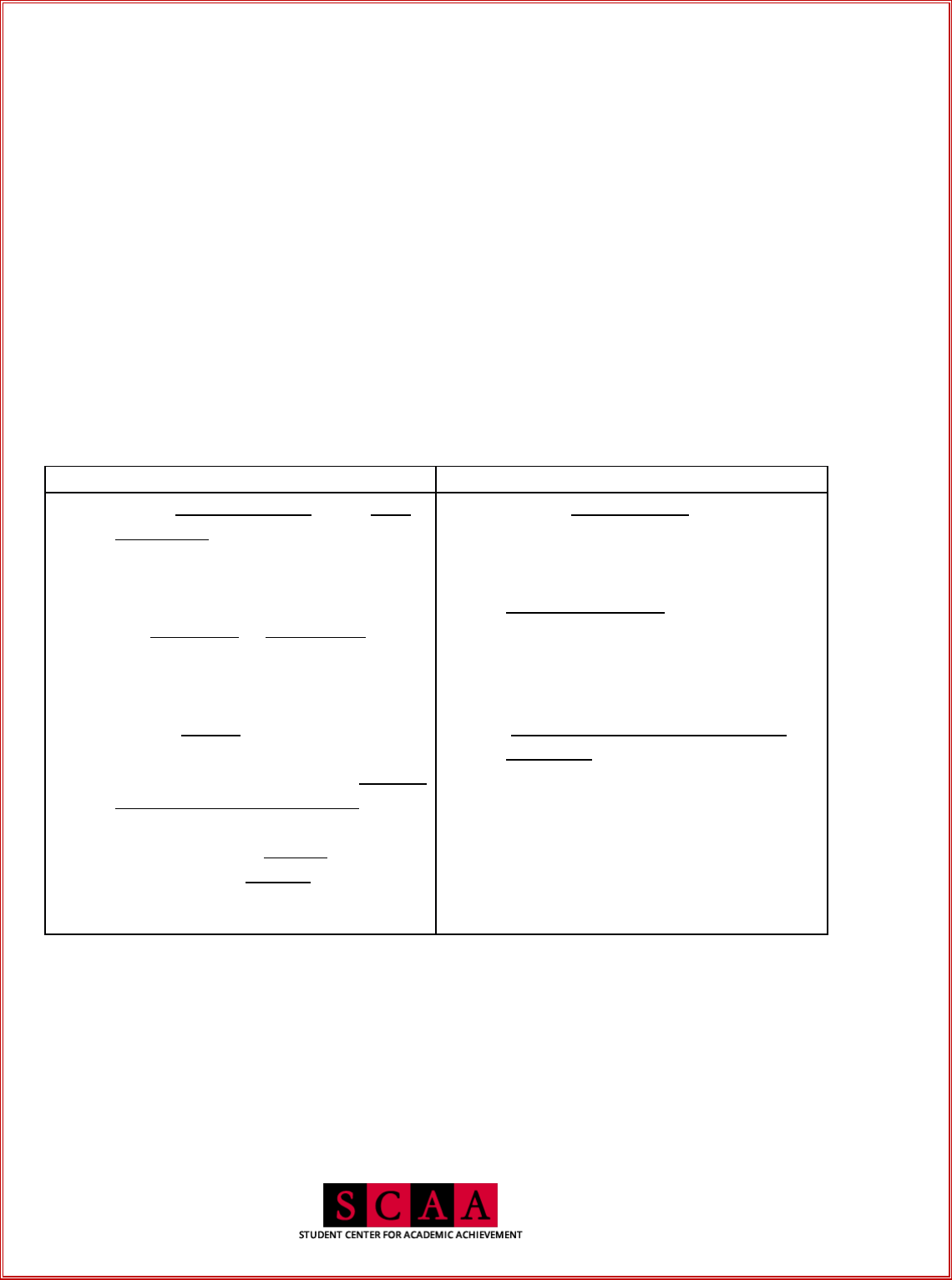
TYPES OF WRITING ASSIGNMENTS
Created by: Chris Kildegaard
There are many different types of writing assignments. Each type varies in the kinds of content, thesis
statement, and organizational strategy that you will need to utilize. These guidelines are general; make
sure you follow any specific instructions from your professor. Also be aware that these types of essays
may overlap for some assignments. Always make sure that you understand your particular assignment
before starting the writing process; this can save you time and stress later!
Example 1: Argumentative Essay
The Basics: An argumentative, or position, assignment asks you to argue for a particular point of view
on a controversial issue. Your job as a writer is to convince your readers of your position, or at least
convince them to give your position thought and consideration.
Sample Prompt: Some people argue that exploring space adds jobs to the economy and gives us a
greater understanding of scientific knowledge. Others, however, feel that the gains made are not
worthwhile and the money could be used more wisely. Write an essay that presents your informed
stance or opinion—your position—on the importance of America's space program. Should we continue
to fund space exploration? Why or why not?
What to do...and not to do
DO…
DO NOT...
● Have a thesis statement with a clear,
explicit position on the issue at hand.
The position does not have to be fully
in-favor or fully against something,
but it should not be in the middle.
● Provide evidence for your claims, in
the form of statistics, scholarly
journals or reputable websites,
personal stories and anecdotes, etc.
● Provide a counterargument (another
possible perspective on your issue)
and a rebuttal/refutation (something
that points out a flaw in the
counterargument or otherwise
explains why your argument is
favorable).
● Simply say that there are pros and
cons to both sides and neither side is
favorable.
● Make personal attacks against people
with opposing views.
● Provide a counterargument but no
rebuttal/refutation.
● Devote half of your paper to your
argument and the other half to
opposing views, such that your paper
does not favor a side.

TYPES OF WRITING ASSIGNMENTS
Created by: Chris Kildegaard
Example 2: Compare and Contrast Essay
The Basics: A compare and contrast essay asks you to explain how two or more things are similar to
and/or different from each other. Often, writing professors will ask you to compare and contrast two
articles about the same controversial issue. It is important to remember not to take a side on the
controversial issue when writing your paper.
Sample Prompt: Compare and contrast the articles “The Unappreciated Success of Charter Schools”
by Adam Ozimek and “A Dozen Problems With Charter Schools” by Valerie Strauss. Address both what
the authors say and how they say it (rhetoric). What do these two articles have in common, and how
are they different?
What to do...and not to do
DO…
DO NOT...
● Have a thesis statement that is clear
and explicit on the similarities and
differences. This can be general, but it
should be present.
● Use quotations or paraphrases to
provide examples of the similarities
and differences.
● Remain neutral on the topic of the
articles (e.g., the issue of charter
schools); focus your paper on how the
articles are alike and different.
● Examine both the content of the
articles and the rhetoric (the
strategies they use to communicate
their content).
● Write a position paper. Remember
that you should not take a position on
the issue that the articles address.
● Evaluate or criticize the articles or
authors (e.g., “Ozimek's article seems
difficult to follow and misses many
important points”).
● Wait until several paragraphs into
your essay to introduce the articles
you are comparing and contrasting.

TYPES OF WRITING ASSIGNMENTS
Created by: Chris Kildegaard
Example 3: Rhetorical Analysis Essay
The Basics: A rhetorical analysis essay asks you to explain the rhetoric (strategies used by the author
to communicate their ideas) of an article and argue why, in your opinion, those strategies are effective
(or not) at convincing the audience of the author's perspective. Common aspects of articles discussed
in this type of essay include writing style (Is it written as an academic paper? Is it more informal and
conversational?); the types of evidence used by the author (statistics, personal anecdotes, etc.); and
appeals to logos, pathos, and ethos (the “rhetorical triangle”). As with compare and contrast
assignments, it is important to remember not to take a side on the issue addressed by the author.
Sample Prompt: Analyze the rhetoric of “Should Fine Arts Be Required?” by Sarah Mitty. What
rhetorical strategies does Mitty use to try to convince her readers of her point of view? Is the article
effective at doing so? Why or why not?
What to do...and not to do
DO…
DO NOT...
● Have a thesis statement that clearly
states whether the article is
rhetorically effective and why.
● Use quotations, paraphrases, or
descriptions of key aspects of the
article to provide examples of the
article's effectiveness (or lack
thereof).
● Remain neutral on the topic of the
articles (e.g., whether art classes
should be required); focus your paper
on the rhetorical strategies used by
the author and their effectiveness.
● Examine the author's use of ethos,
pathos, and logos, as well as various
other rhetorical strategies (types of
evidence used, visual aids like graphs
and diagrams, using vivid examples,
etc.)
● Write a position paper. Remember
that you should not take a position on
the issue that the article addresses.
● Attack the author, rather than
critically examining the rhetoric.
● Spend a large portion of your paper
on summarizing the content of the
article rather than addressing the
rhetorical strategies.
–
Reference: “Rhetorical Analysis” from Texas A&M University Writing Center.
